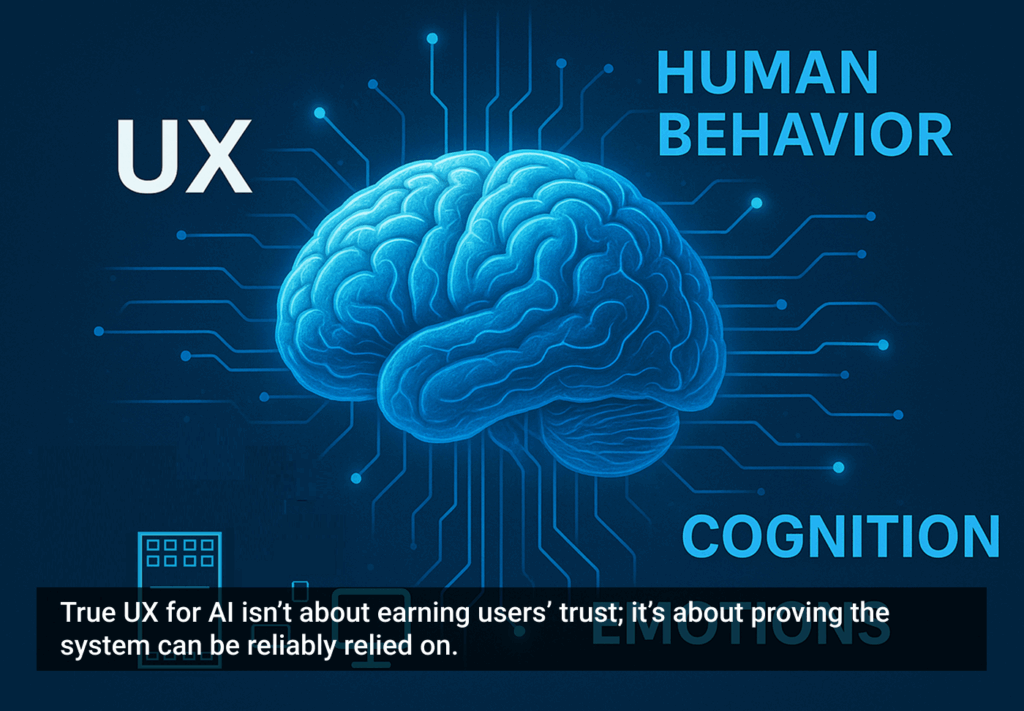I’m a big fan of Penn and Teller, and have been for many years. I saw them live for the first time last month and was blown away by their performance.
What I really love about Penn and Teller is that they often “pull back the curtain” and reveal how they do their magic. Other magicians produce an air of mysticism and pretense around their craft, but Penn and Teller will have none of that. They know they are playing tricks, fooling the audience, and by letting everyone in on what they are doing they debunk mysticism while also (hopefully) teaching you something.
Their attitude towards their work inspired me to write an article that hopefully “pulls back the curtain” on some of user experience design’s “greatest mysteries.” Much like Penn and Teller’s mocking of “artists” like Criss Angel, I have met quite a few pretentious design types in UX who think way too much of themselves and what they do. This type of attitude frustrates me, because much of what UX professionals do is actually easy to teach and apply. That’s why I’ve written one book of essays, lessons, and tactics around user experience, and have begun work on a second. I want to demystify the domain and make it accessible to all.
To that end, here are some of the key “secrets” of UX, revealed.
We Aren’t All-Knowing Prophets
I know many UX designers present themselves as unquestionable experts on human beings; as seers whose edicts should be followed to the letter.
Come on.
First off, no one can be that good. If you think you are, such arrogance will in all likelihood prevent you from seeing some basic truths about human behavior (i.e. truths that don’t align with your worldview). The key to success in UX is to start from a place of humble confidence, not arrogance.
User Experience Designers Don’t Design User Experiences
UX designers don’t design experiences, experiences happen when users encounter a situation and respond to it. They can respond well or badly. All UX designers can do is understand users well enough to design a series of objects, interactions, and/or screens that make sense and work for users—hopefully provoking a positive “experience.”
The Most Important UX Skills are Soft Ones
There’s an old saying often attributed to Woody Allen: “90% of life is just showing up.” I’d say if you are a UX professional, a good chunk of the remaining 10 percent consist of the soft skills of listening, empathy, and communication. Listen in order to understand the problem and hear feedback from users to formulate solutions. Have empathy towards users, so that you can care about what you are doing to help them. Be a good communicator so that you can message your solution and discuss it with the people who have to execute it.
Simple is Hard
In my experience, the best designs are simple designs. Creating simple designs is really hard. Not only do you have to fight your own instinct to make things more complicated than they need to be, you also have to fight that same instinct in everyone you are working with, including stakeholders and product managers. Which is why you need …
Debate Skills
Not only do good UX people have good communication skills, they can also sell their points in the face of critics and cynics who don’t like the solutions they’ve produced. At the same time, an open and “balanced” designer can debate a point but also accept when they are wrong. Because …
Failing is Awesome
In our society, failure has a stigma: if you fail then somehow you are a “loser.” A huge part of UX design involves conceptual design and user testing, and when we fail (if we are paying attention) we can learn from it. At the very least, when a design we pilot doesn’t work we know that particular approach doesn’t work. Some of the best insights into people and their behaviors have come from testing designs that users did not understand and/or could not use.
It’s not Rocket Science
Yes, when you do formal usability testing or user research, there is a certain amount of analysis involved, but it’s not that hard. If there were a lot of math involved, frankly, I wouldn’t be doing it … because I suck at math.
Common Sense is the Best Tool a Designer has
If a design solution that you or a peer creates doesn’t make sense then it probably won’t make sense to the end users. A big dose of common sense helps designers filter out good ideas from the bad ones. Don’t try and sell a design that requires leaps in logic and over-thinking things.
UI Design is not that Important
I’ve designed screens and interfaces for over a decade, and what I’m suggesting might make some of my colleagues mad, but I’m going to put it out there: UI design is not that important, and it’s not even that hard. It may have been hard ten years ago, but we now have a plethora of design patterns and best practices available for our review and use. We have design guidelines from every major software platform.
Focus (and sweat) the details, yes, but don’t try and rethink things that people who are smarter than you have already figured out.
The Best Designers Know Users, not UIs
UI design is not hard. Understanding users and figuring out how to create designs that make their lives better—that’s what’s hard. The best designers spend their time trying to understand who they are designing for by doing research and interviews. “Know your audience” is a common statement I have heard in multiple domains, and it’s absolutely true in UX design.
Usability Testing can be Done (Almost) Anywhere
I have built three different usability labs in my career, and have done the majority of my usability testing with one laptop in a quiet area (a coffee shop, an empty office). Building out a huge technological terror to do something as simple as testing an initial concept with some users is unnecessary overkill.
Developers can Do UX Design, too (Many are Really Good at it)
I’ve never been a big fan of “silos” in projects, where a dedicated group of designers do a design and then they hand it over to developers to build it. That’s why I like working in an agile team, where developers pitch design ideas just like us UXers do. I’ve met many developers over the years who could create great useable screens, often better than those the “UX professional” made.
If you are on a team but ignore the talents of many on the team because they aren’t “accredited” designers or don’t have the right title, well, I pity you. You’re missing out on some talent that may be right under your nose.
Usability is not Enough
We have gone beyond usability. Now, UX designers have to think about desirability, about content, and about how to frame the offering to increase usage. Usability is “table stakes.”
We are All Storytellers, so Tell a Good Story
Explaining is a huge part of what we do: explaining what we have found out about our users, explaining how we can help users with what we have designed, explaining why a certain feature should be accentuated or de-scoped. The best way to explain is by telling a story, because humans are all storytellers. Some of us are good at it and some of us are not.
The best of us weave a compelling tale, and the best UX professionals know that storytelling is the key to it all.
Image of ace up sleeve courtesy Shutterstock.







